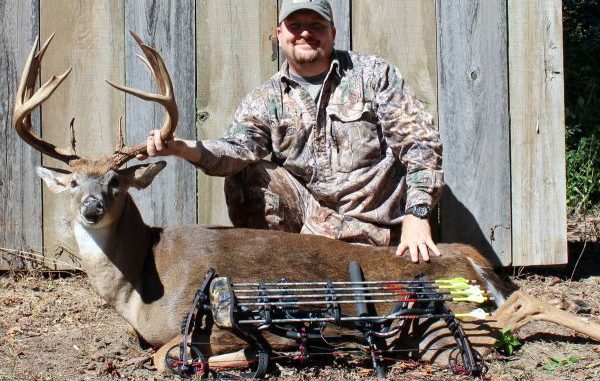
When it comes to hunting with a buck decoy, the game changes significantly.
While Richardson tries to lure deer in with a calmer-looking doe decoy, throwing out a decoy with antlers calls for a totally different situation — one where aggressive sounds like grunting and rattling horns might be used.
“I haven’t used a buck decoy as much, but when I have been successful with it was during the peak of the rut when bucks are really aggressive and displaying dominance,” Richardson said. “A dominate buck will come in with his ears laid back, strutting sideways, and either hit the decoy or circle it a few times and give you a shot.
“Most of the time — especially if you’re using rattling horns — a buck will just come in and survey the situation and get within 40 to 50 yards, looking for the hot doe that (the decoy) is looking for, and then just ease off.”
Richardson has also discovered it’s important to change positioning of the buck decoy. Where a doe is positioned to face away from the hunter, Dewayne likes buck decoys to face him and for good reason: When a buck comes in, it’s probably looking for a fight.
“When a buck comes in, it’s like they want to circle it and be at the front of the decoy — I guess just in case it wants to fight or whatever, they’re ready,” Richardson said.
Circling to the front of an opposing buck is a naturally aggressive action for a dominate buck, and that leads the deer right where you want it to go.
It’s just like it’s on a string.


